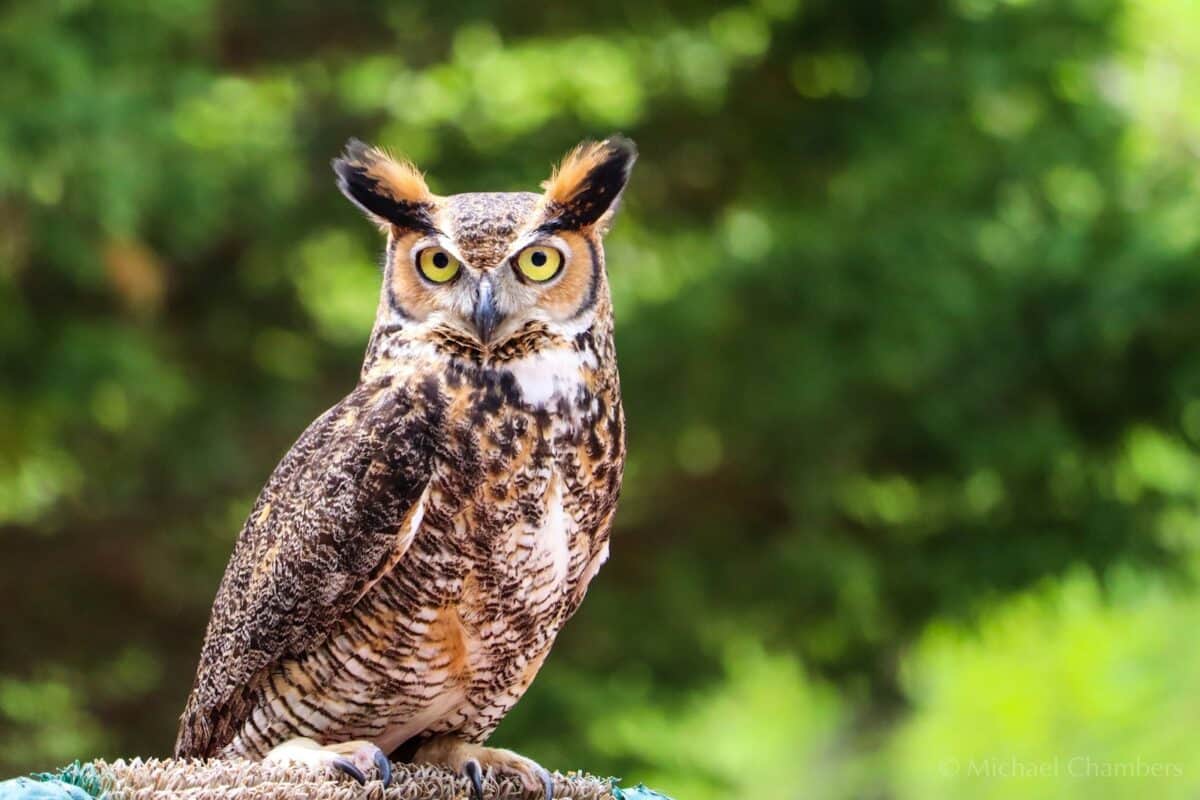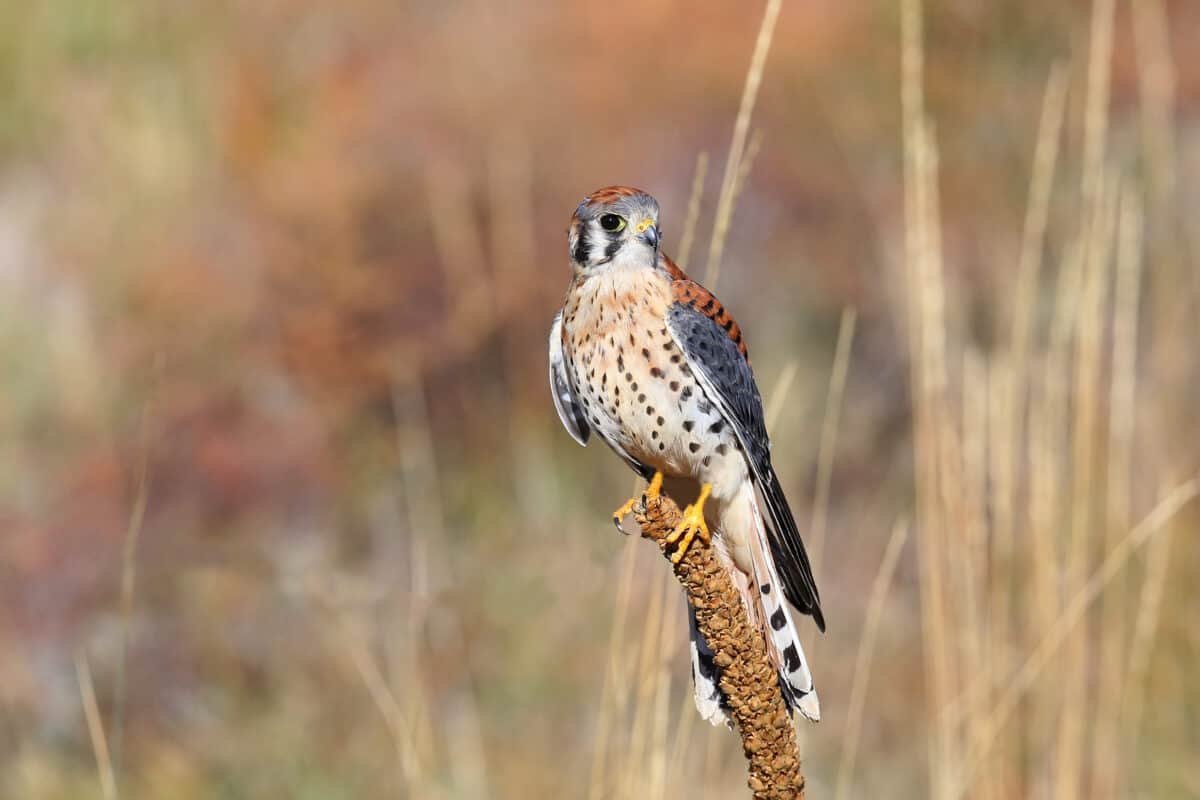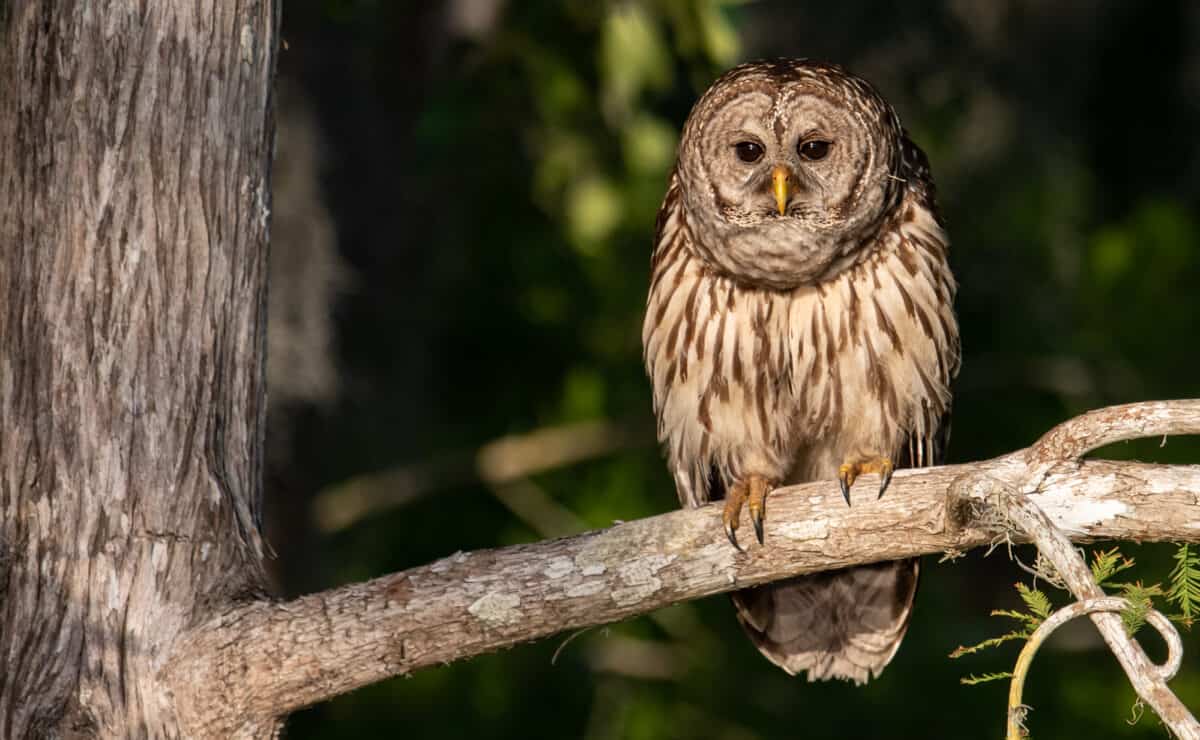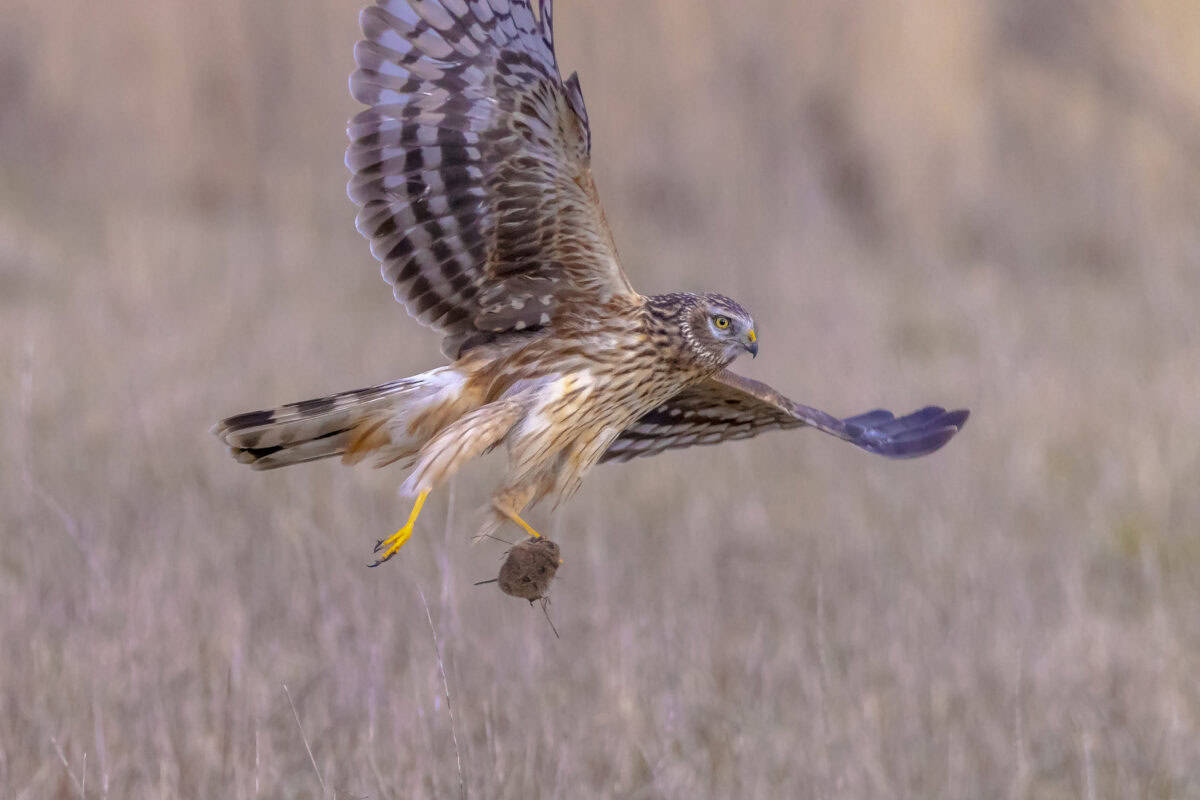The United States is home to a remarkable diversity of birds of prey, also known as raptors. These magnificent predators are characterized by their sharp talons, hooked beaks, and exceptional hunting abilities. From soaring eagles to swift falcons, the skies of America host some of the most impressive aerial hunters on the planet. Whether you’re an avid birder or simply enjoy observing wildlife, spotting these powerful birds can be a thrilling experience. This article will introduce you to ten magnificent birds of prey that can be found across various habitats in the United States, their distinctive features, hunting behaviors, and where you’re most likely to encounter them.
Bald Eagle America’s National Bird

The Bald Eagle (Haliaeetus leucocephalus) stands as an iconic symbol of American freedom and strength. Despite its name, these majestic birds aren’t actually bald – their white-feathered heads contrast dramatically with their dark brown bodies, creating a distinctive appearance visible even from great distances. With wingspans reaching up to 7.5 feet and weighing between 8-14 pounds, Bald Eagles are impressive predators that primarily feed on fish, though they’re opportunistic and will also consume waterfowl, small mammals, and carrion. Once endangered due to habitat loss and pesticide use (particularly DDT), Bald Eagles have made a remarkable recovery thanks to conservation efforts. Today, they can be spotted near large bodies of water across most of the United States, with particularly large concentrations in Alaska, the Great Lakes region, the Pacific Northwest, and Florida during winter months.
Red-tailed Hawk The Most Common American Raptor

The Red-tailed Hawk (Buteo jamaicensis) is perhaps America’s most widespread and familiar bird of prey, found in virtually every habitat across the continental United States year-round. Recognizable by their rich, rusty-red tails (visible in adults) and bulky, broad-winged silhouette, these adaptable hunters are frequently spotted perched on roadside poles or soaring in wide circles using thermal updrafts. Red-tailed Hawks typically weigh between 2-4 pounds with wingspans of 3.5-4.5 feet. They primarily hunt small to medium-sized mammals like rodents, rabbits, and ground squirrels, making them beneficial for agricultural pest control. Their distinctive raspy scream is so iconic that it’s often used in movies as the generic call for any bird of prey, even eagles. Due to their adaptability to human-altered landscapes, Red-tailed Hawks are one of the few raptor species that have actually increased in numbers in some regions over the past century.
Peregrine Falcon The World’s Fastest Animal

The Peregrine Falcon (Falco peregrinus) holds the title of the world’s fastest animal, capable of reaching speeds over 240 mph during hunting dives called “stoops.” These sleek, crow-sized raptors are characterized by their slate-gray backs, barred underparts, and distinctive “mustache” facial markings. Once critically endangered due to DDT poisoning, Peregrines have made a remarkable recovery and have even adapted to urban environments, nesting on skyscrapers and bridges which mimic their natural cliff habitats. In cities, they feed primarily on pigeons and other birds, while in natural settings they target a wide variety of avian prey. Peregrines can be found across the entire United States, though they’re more concentrated along coastal areas, major river systems, and mountain ranges. Urban birdwatchers can spot them in cities like New York, Chicago, and San Francisco, where established webcams often document their nesting activities.
Great Horned Owl The Tiger of the Sky

The Great Horned Owl (Bubo virginianus) is North America’s most widespread and adaptable owl species, earning the nickname “tiger of the sky” for its fierce hunting prowess and distinctive tufts of feathers (“horns”) on its head. These powerful nocturnal predators have wingspans of 3-5 feet and are identified by their mottled gray-brown plumage, white throat patch, and deep hooting calls that echo through forests at night. Great Horned Owls are apex predators with one of the most diverse diets among North American raptors, hunting everything from tiny rodents to skunks, rabbits, and even other raptors including hawks and smaller owls. They can be found in almost every habitat across the United States, from dense forests to desert canyons and suburban parks. Unlike many birds, Great Horned Owls begin nesting in late winter, sometimes even in January, when their distinctive hooting calls become more frequent as part of their courtship ritual.
Osprey The Fish Hawk

The Osprey (Pandion haliaetus), often called the “fish hawk,” is a specialized raptor uniquely adapted for catching and eating fish. With wingspans of 5-6 feet, these distinctive birds are easily identified by their white underparts, dark brown backs, and prominent dark eye stripes. Ospreys possess specialized adaptations for fishing, including reversible outer toes, barbed foot pads for gripping slippery prey, and dense, oily plumage that prevents them from becoming waterlogged when they plunge feet-first into water to catch fish. These remarkable hunters have a nearly 70% success rate when fishing—far higher than many other predators. Found near lakes, rivers, coastal areas, and reservoirs across the United States, their populations have rebounded significantly since the ban on DDT. Ospreys are migratory in the northern U.S., heading to Central and South America for winter, while some Florida populations remain year-round. Their large stick nests on platforms, utility poles, and channel markers have become familiar sights along America’s waterways.
Cooper’s Hawk The Backyard Bird Hunter

The Cooper’s Hawk (Accipiter cooperii) is a medium-sized woodland raptor that has increasingly adapted to suburban environments, earning it the reputation as the “backyard bird hunter.” These agile predators have slate-gray backs, rusty barred chests, and relatively long tails that help them maneuver through dense forest canopies and suburban landscapes while hunting. Cooper’s Hawks are bird-hunting specialists, primarily targeting songbirds and doves, and have become notorious visitors to backyard bird feeders—not for the seeds, but for the smaller birds attracted to them. With wingspans of about 2-3 feet, these raptors are sometimes confused with the smaller Sharp-shinned Hawk or larger Northern Goshawk, though their medium size and rounded tail tip help distinguish them. Cooper’s Hawks can be found year-round throughout most of the continental United States, with northern populations migrating south during winter. Despite being heavily hunted in the early 20th century, their populations have recovered dramatically, and they’ve proven remarkably adaptable to human-altered landscapes.
Golden Eagle The Majestic Mountain Hunter

The Golden Eagle (Aquila chrysaetos) is one of North America’s largest and most powerful birds of prey, rivaling the Bald Eagle in size with wingspans reaching 7-7.5 feet. These magnificent raptors are named for the golden-buff feathers on their napes and crowns, which contrast with their otherwise dark brown plumage. Unlike Bald Eagles, Golden Eagles rarely scavenge and are active predators capable of taking down prey as large as deer fawns, though they primarily hunt jackrabbits, marmots, and ground squirrels. In the United States, they’re primarily found in the western states where they inhabit open country, mountains, canyonlands, and deserts. Small populations also exist in the Appalachian Mountains and during winter migrations in the eastern states. Golden Eagles require large territories and are sensitive to human disturbance, making them important indicators of ecosystem health. These birds form long-term pair bonds and may use the same nesting sites for generations, building massive stick nests on cliff ledges or occasionally in large trees.
American Kestrel The Colorful Falcon

The American Kestrel (Falco sparverius) is North America’s smallest and most colorful falcon, often spotted hovering over open fields or perched on roadside wires. Despite measuring only 8-12 inches in length with a wingspan of about 21 inches, these diminutive raptors possess the characteristic speed and hunting prowess of their larger falcon relatives. Male kestrels are particularly vibrant, with bluish-gray wings, rusty backs and tails, and distinctive black “sideburns” on their white faces. These agile hunters primarily target insects, small rodents, and occasionally small birds, often hunting by hovering in place—a behavior called “kiting”—before diving on prey. American Kestrels can be found across the entire United States in open habitats including meadows, grasslands, deserts, and agricultural areas. Despite their adaptability, kestrel populations have declined in many regions over recent decades due to habitat loss and pesticide use, leading to widespread nest box programs to support their recovery.
Barred Owl The “Who Cooks for You?” Owl

The Barred Owl (Strix varia) is a medium-large owl native to eastern North America that has been expanding its range westward in recent decades. Immediately recognizable by its round head (lacking ear tufts), chocolate-brown eyes (unlike most owls’ yellow eyes), and distinctive barring pattern on its chest, these charismatic nocturnal hunters are vocal year-round. Their characteristic hooting call is commonly described as sounding like “Who cooks for you? Who cooks for you all?” – making them one of the easiest owls to identify by sound. Barred Owls primarily inhabit mature mixed forests near water, though they’ve proven adaptable to suburban woodlands as well. With wingspans of approximately 40-50 inches, they hunt a variety of prey including small mammals, birds, amphibians, reptiles, and even fish and crustaceans. While historically birds of the eastern forests, Barred Owls have expanded westward across the northern United States and into the Pacific Northwest, where their presence has created conservation concerns as they compete with the endangered Spotted Owl.
Northern Harrier The Marsh Hawk

The Northern Harrier (Circus hudsonius), formerly known as the Marsh Hawk, is distinctive among American raptors for its owl-like facial disk, low-flying hunting style, and pronounced sexual dimorphism. Males are sleek gray above and white below with black wingtips, while females are larger and entirely brown. Both sexes display a prominent white rump patch visible during flight. Unlike most hawks that hunt primarily by sight, Northern Harriers rely heavily on their exceptional hearing to locate prey beneath vegetation, similar to owls. These slim-bodied hawks with wingspans of 3.5-4.5 feet typically hunt by flying low over open fields, marshes, and grasslands with wings held in a distinctive V-shape, methodically quartering the ground for rodents, small birds, and reptiles. Northern Harriers can be found across the United States, breeding primarily in the northern states and Canada, with winter ranges extending throughout the country. Unfortunately, their populations have declined significantly due to loss of wetland and grassland habitats, making sightings increasingly precious for bird enthusiasts.
Mississippi Kite The Graceful Sky Dancer

The Mississippi Kite (Ictinia mississippiensis) is a sleek, graceful raptor that spends summers breeding in the southern and central United States. These medium-sized hawks with pointed wings and long tails appear uniformly gray from a distance, with subtle plumage featuring dark gray backs, lighter gray heads, and pale gray undersides. Their striking red eyes contrast with their overall coloration. Mississippi Kites are aerial specialists that spend much of their time soaring and hunting on the wing, capturing and eating large insects like dragonflies, cicadas, and grasshoppers while in flight. Their acrobatic courtship displays and communal roosting behaviors make them fascinating to observe. Despite their name, Mississippi Kites are most numerous in the southern Great Plains, particularly Oklahoma, Texas, and Kansas, though their range extends east to the Atlantic coast. During migration, they travel in loose flocks to winter in central and south America. Once uncommon due to habitat loss and shooting, these elegant raptors have adapted well to some human-altered environments, even nesting in suburban neighborhoods with mature trees in parts of their range.
Conclusion: Experiencing America’s Magnificent Birds of Prey

The United States offers incredible opportunities to observe these ten magnificent birds of prey, each representing nature’s perfect balance of power, precision, and adaptation. From the iconic Bald Eagle that recovered from the brink of extinction to become a conservation success story, to the diminutive American Kestrel hovering over grasslands, these raptors showcase the remarkable diversity of hunting strategies and ecological roles. Understanding these birds enhances our appreciation for the complex ecosystems they inhabit and the challenges they face in an ever-changing landscape. Whether you’re an experienced birder with high-powered optics or simply someone who pauses to look skyward when a hawk’s shadow passes overhead, these magnificent aerial predators connect us to something wild and free in the American experience, reminding us of our responsibility to protect the habitats that sustain them for generations to come.
- 10 Birds of Prey You Can Spot in the U.S. - August 11, 2025
- 10 U.S. Zoos Everyone Needs to Visit at Least Once - August 11, 2025
- 15 Times Scientists Observed Empathy in Animals - August 11, 2025

